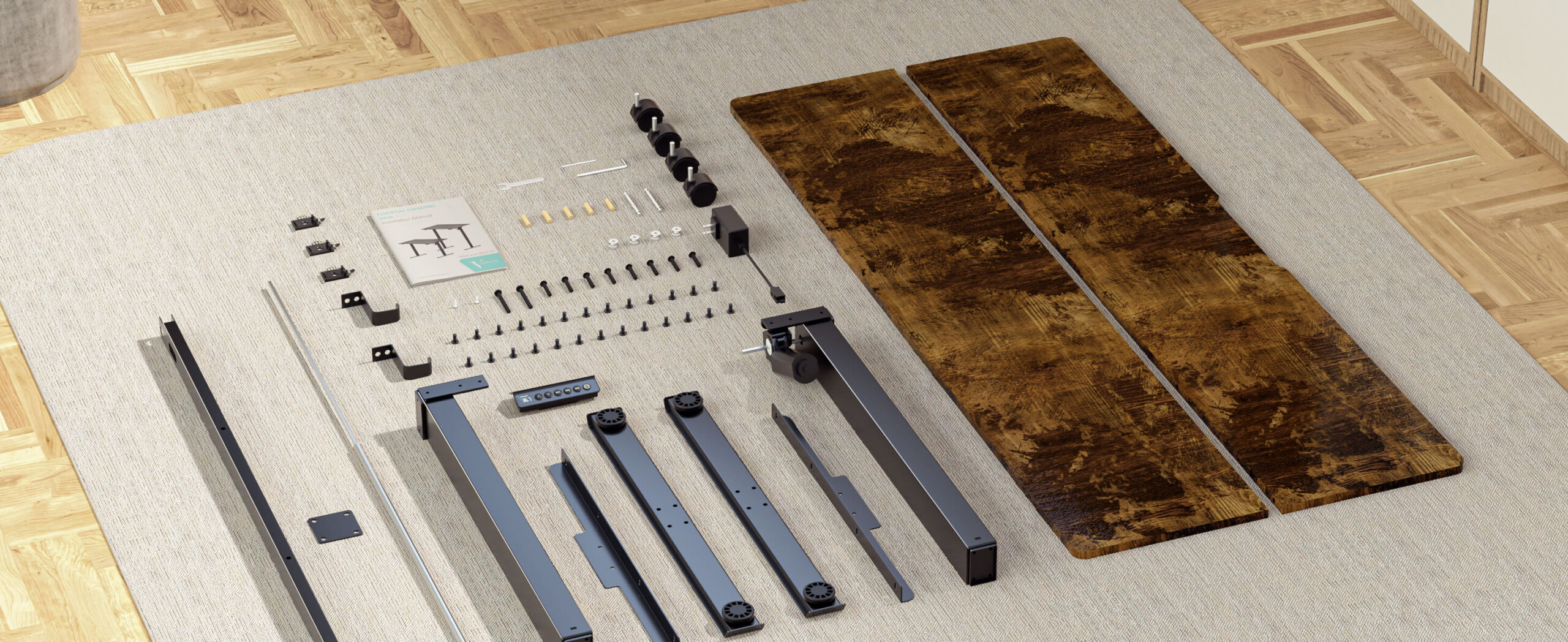We’ve all been there: the clock ticks by, your posture starts to slump, and the aching in your back becomes unbearable. The culprit? Sitting for hours at a desk. And the impact? Well, it’s much more than just sore muscles. Prolonged sitting is a serious health risk. But here’s the good news: standing desks are taking the office world by storm. These adjustable workstations are not only transforming how we work but are also reshaping the future of workplace wellness.
Let’s break down why standing desks are more than just a passing trend. They’re a catalyst for change in the way we approach health, productivity, and overall well-being at work.
The Growing Importance of Workplace Wellness
In the past, workplaces were designed for comfort and efficiency. But what was considered “comfortable” has taken a backseat to the health concerns that come with prolonged sitting. While sitting used to be the norm, it’s quickly becoming clear that sitting for long periods comes with some serious consequences. Heart disease, obesity, and diabetes are just a few of the health risks associated with a sedentary lifestyle.
In response, companies are starting to rethink their office environments. They are focusing more on employee wellness by adopting healthier office designs, incorporating wellness programs, and, yes, promoting standing desks as an essential tool for better health.

The Health Benefits of Standing Desks
Standing desks have proven themselves as a practical solution to the health risks caused by sitting for extended periods. They’re not just trendy furniture pieces; they’re powerful tools for improving physical and mental health. Here’s how:
-
Reducing Health Risks
Sitting has been shown to increase the risk of heart disease, diabetes, and even certain cancers. By alternating between sitting and standing, standing desks help combat these risks. Studies have shown that standing more during the day can improve circulation, boost metabolism, and lower the likelihood of developing these chronic conditions. In short, standing desks reduce the negative effects of sitting and promote better overall health. -
Improved Posture and Reduced Pain
One of the biggest complaints from those who sit all day is back and neck pain. Sitting for long hours often leads to poor posture, muscle tension, and discomfort. Standing, on the other hand, encourages a more natural posture. It aligns the spine and reduces the strain on muscles, helping alleviate discomfort and prevent long-term pain. A standing desk helps reduce those nagging aches, so you can focus on what matters—your work. -
More Energy and Focus
Sitting for long periods can drain your energy, leaving you feeling sluggish and unproductive. When you stand, your blood flows more freely, and oxygen reaches your brain. This boosts energy levels, increases focus, and helps you stay sharp throughout the day. Standing desks promote a natural burst of energy, keeping you alert and engaged during those long work hours.
Boosting Productivity with Standing Desks
It’s not just about health. Standing desks also have a profound effect on productivity. The benefits extend beyond physical well-being, positively impacting how we approach work tasks.
-
Sharper Mental Clarity
Standing desks help fight mental fatigue. By boosting circulation, they keep your mind alert and your focus sharp. When you’re not fighting a mental slump caused by sitting too long, your mind is free to tackle complex tasks with clarity. A standing desk can enhance your cognitive abilities, making it easier to think clearly and stay on task. -
Encouraging Collaboration and Interaction
A standing desk doesn’t just change how you work—it changes how you interact with others. Standing naturally encourages more movement, which means you’re more likely to engage with colleagues. A quick chat, a brainstorming session, or just a casual exchange of ideas is easier when you’re not anchored to a chair. This increased interaction can foster creativity, spark innovation, and improve team collaboration. -
Preventing Time Wasting
How many times have you found yourself mindlessly scrolling through your phone or zoning out at your desk? Standing desks can reduce this. The act of standing encourages you to move more—whether it’s stretching or walking to another area of the office. This small change can keep your energy up and prevent wasted time. It’s a productivity booster that keeps you engaged and moving.
Maximizing the Benefits of Standing Desks
To truly reap the rewards of standing desks, it’s important to use them correctly. Simply having a standing desk isn’t enough—you need to make sure you’re using it the right way. Here are a few tips to maximize its potential:
-
Start Gradually
You can’t expect to go from sitting all day to standing for hours without some adjustment. Start with short intervals. Stand for 20-30 minutes at a time, and gradually increase the duration as your body gets used to it. Over time, you’ll be able to stand for longer periods without discomfort. -
Optimize Your Desk Setup
Proper ergonomics are key. The desk height should be adjusted so that your screen is at eye level and your arms are at a 90-degree angle when typing. This will reduce strain on your neck, shoulders, and wrists. Investing in an anti-fatigue mat for standing can also help ease pressure on your legs and feet. The better your setup, the more comfortable your standing experience will be. -
Take Regular Movement Breaks
Standing isn’t a cure-all. In fact, standing in one position for long periods can also cause discomfort. The key is movement. Take short walking breaks throughout the day. Stretch. Change positions. Movement prevents fatigue and keeps your body from becoming stiff. -
Listen to Your Body
Standing desks are about balance. If you feel tired or uncomfortable, take a break. Alternating between sitting and standing throughout the day is crucial. You don’t have to stand all day—just stand enough to reap the benefits and avoid the dangers of prolonged sitting.
The Future of Workplace Wellness: Standing Desks Leading the Way
Standing desks are more than just a passing trend—they are the future of workplace wellness. As more companies embrace wellness initiatives, standing desks are becoming a standard part of office culture. They are essential to creating healthier, more productive work environments, and their popularity is only going to grow.
The workplace of tomorrow is dynamic, flexible, and focused on employee well-being. Standing desks are at the heart of this change, helping employees stay healthier, more energized, and more engaged. As the benefits become clearer, businesses will continue to adopt standing desks as a crucial part of their wellness programs.
Conclusion: Embrace the Change for a Healthier, More Productive Workplace
Standing desks are revolutionizing the way we work. They are more than just office furniture; they are essential tools for promoting better health, increased productivity, and a positive work environment. By reducing the risks of prolonged sitting, improving posture, and boosting energy and focus, standing desks offer a simple yet powerful solution to the challenges of modern office life.
As the demand for healthier workplaces continues to rise, standing desks will play an increasingly important role. For companies looking to invest in employee well-being and improve performance, standing desks are a smart choice. The future of work is standing—and the future starts now.
